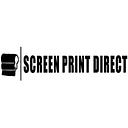What Are the Different Types of Materials That Can Be Used for Direct-to-Film Printing?
Direct-to-Film (DTF) printing has revolutionized the custom printing industry, offering a versatile and efficient method for transferring detailed designs onto various materials. This innovative technique involves printing designs onto a special film and then transferring them onto the desired substrate using heat and pressure. The adaptability of DTF technology allows it to be used on a wide range of materials. Let’s explore the different types of materials that can be effectively used for this printing method.
1. Cotton
Cotton is one of the most popular materials for this type of printing. Its natural fibers allow for excellent ink absorption, resulting in vibrant and durable prints. Whether it’s a cotton t-shirt, hoodie, or tote bag, the process provides high-quality results with a soft hand feel.
2. Polyester
Polyester is another widely used material, especially in the sports and activewear industry. The synthetic fibers in polyester provide a smooth surface that allows for sharp and detailed prints. Printing on polyester garments is perfect for producing vibrant colors and intricate designs that withstand multiple washes.
3. Blends
Fabric blends, such as cotton-polyester blends, are also suitable for this method. These blends combine the best properties of both materials, offering a balance between the softness of cotton and the durability of polyester. Printing on blended fabrics ensures vibrant colors and long-lasting prints, making it ideal for everyday wear.
4. Nylon
Nylon is a synthetic fabric known for its strength and elasticity. This printing technique works well on nylon, making it a great choice for items like jackets, bags, and other outdoor gear. The flexibility and durability of nylon allow the printed designs to withstand the rigors of outdoor activities.
5. Leather
Printing on leather opens up a world of possibilities for customizing fashion accessories, such as bags, wallets, and shoes. The unique texture of leather adds a premium look to the prints, making each item stand out. Special adhesives and techniques are used to ensure the ink adheres properly to the leather surface.
6. Denim
Denim, a durable cotton fabric, is commonly used for making jeans, jackets, and bags. This printing method on denim allows for creative customization, adding unique designs and patterns to this classic material. The prints on denim are long-lasting and can withstand frequent wear and washing.
7. Canvas
Canvas is a heavy-duty fabric often used for tote bags, shoes, and outdoor gear. This printing method on canvas produces high-quality, durable prints that can endure rough usage. The texture of canvas adds depth and character to the printed designs, making them visually appealing.
8. Lycra/Spandex
Lycra, also known as spandex, is a stretchy material commonly used in activewear and swimwear. Printing on lycra requires special attention to ensure the prints remain vibrant and elastic. The flexibility of lycra makes it ideal for garments that need to stretch without compromising the print quality.
9. Silk
Silk is a luxurious fabric known for its smooth texture and sheen. Printing on silk can create stunning, high-quality prints with intricate details. Due to its delicate nature, printing on silk requires careful handling and specific settings to achieve the best results.
10. Rayon
Rayon is a semi-synthetic fiber made from natural sources like wood pulp. It has a silky feel and is often used in lightweight, breathable garments. Printing on rayon produces vibrant colors and intricate designs, making it a popular choice for fashion-forward clothing.
Conclusion
Direct-to-Film printing offers unparalleled versatility, allowing you to print on a wide variety of materials, each with its own unique characteristics. Whether you are customizing apparel, accessories, or other items, understanding the different types of materials that can be used for this printing method will help you achieve the best results for your projects. Embrace the possibilities and let your creativity shine with DTF technology on diverse substrates.
